
Alphabetical Index
Chemical Composition of Steels
Keyword Search
Steel Names
Alloyed Steels
Carbon Steels
Cast Irons
Chromium Steels
Cold Work Tool Steels
Creep Resistant Steels
Hot Work Tool Steels
Molybdenum Steels
PM steels
Stainless Steels
Structural Steels
Tool Steels
Vanadium Steels
White Cast Irons
M2C Carbides
M3C Carbides
M7C3 Carbides
M23C6 Carbides
MC Carbides
Light Microscopy
EDS/WDS Microanalysis
Scanning Electron Microscopy
Transmission Electron Microscopy
X-Ray Diffraction
Help
Contact Us
Home
Carbides in the S 390 PM and S 690 PM steels I

Table 1: Chemical composition of the steels.
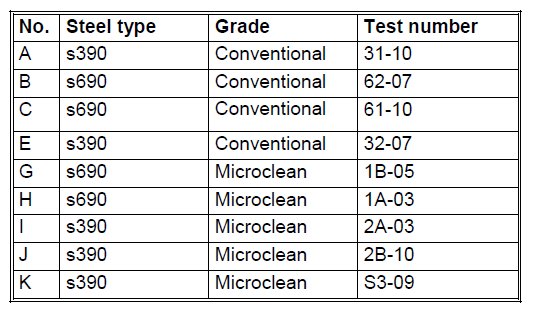
Table 2: Test specimens used for cross section observations.
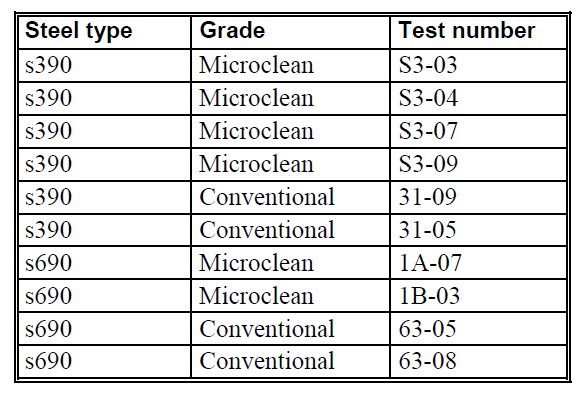
Table 3: Test specimens used for fracture surface observations.
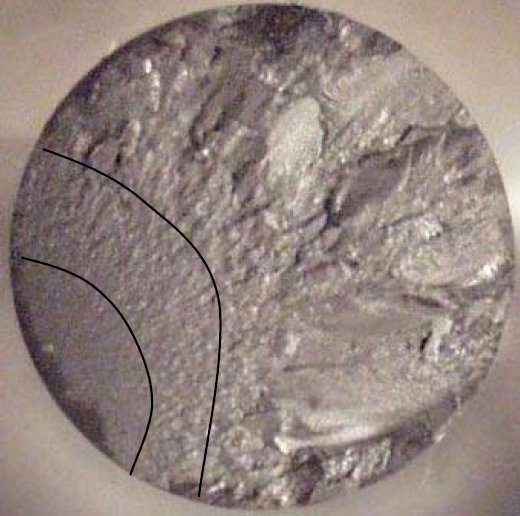
Figure 1: Fracture surface on test specimen with crack initiation (left), initial fracture (middle) and final fracture (right) areas.
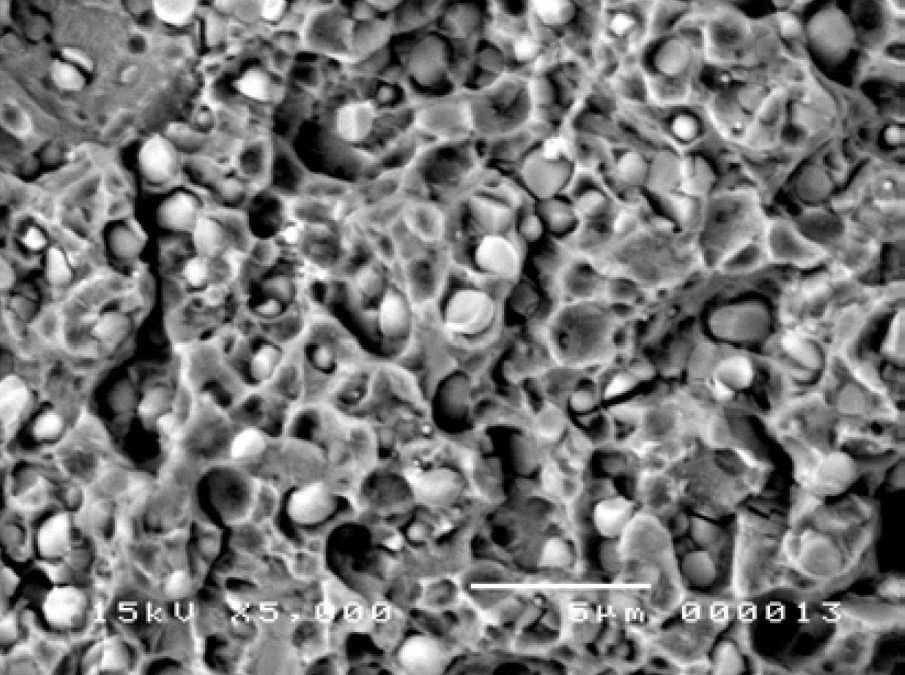
Figure 2: Typical image of fracture surface used for counting fractured carbides. Scale bar: 5 µm.
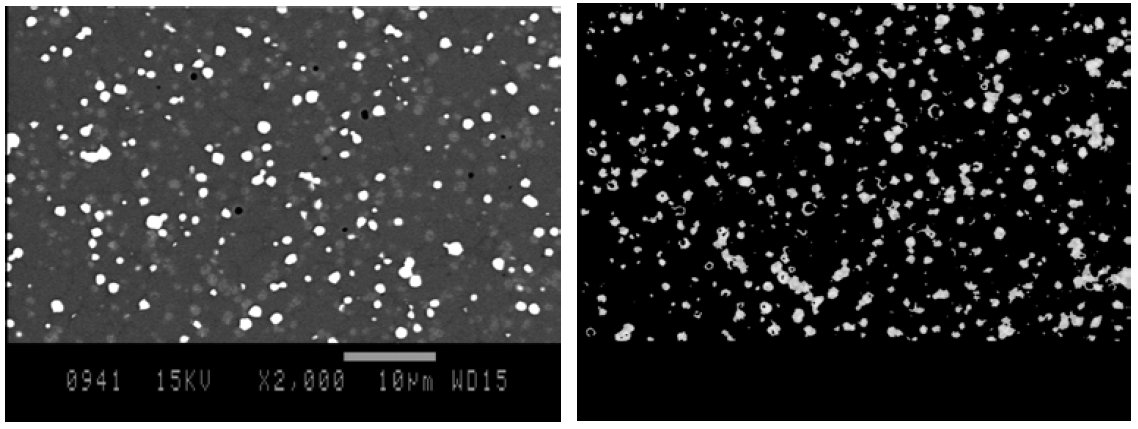
Figure 3: BSE image before (left) and after (right) image processing regarding V8C7-carbides. Scale bar: 10 µm.
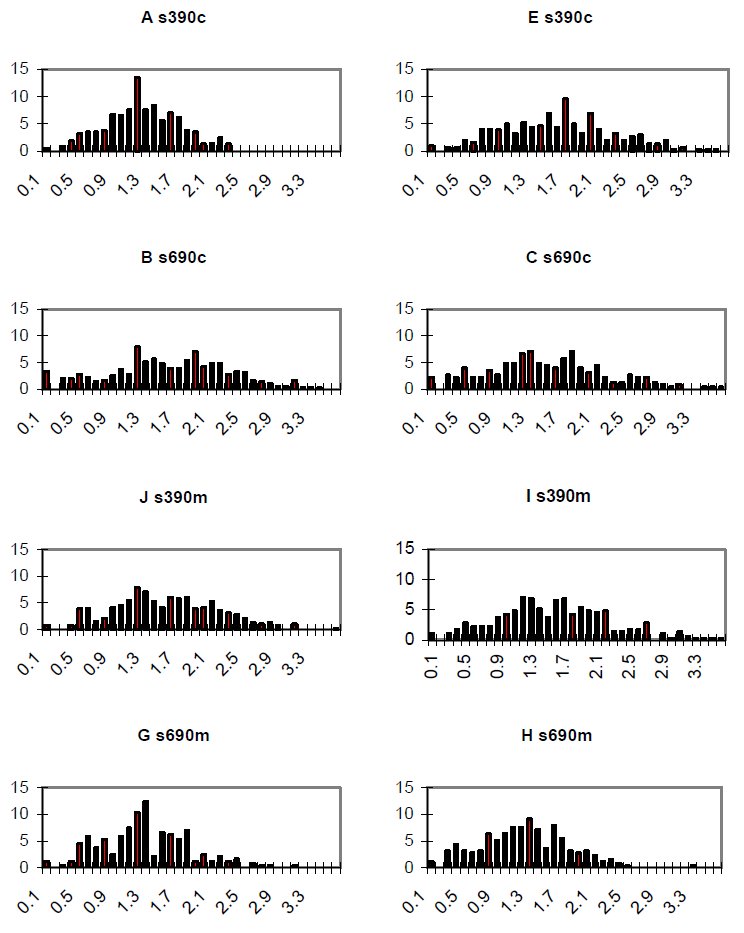
Figure 4: Vanadium carbide size histograms based on EDS-maps x-axis: mean diameter in µm; y-axis: frequency in percentage.
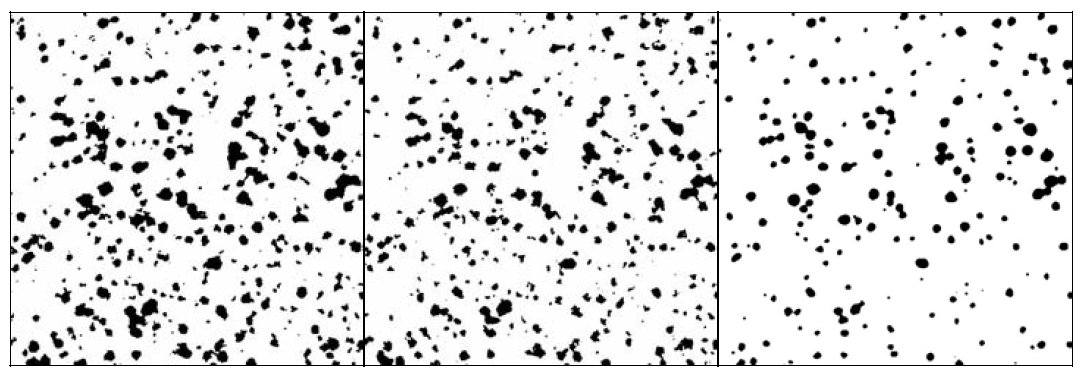
Figure 5: EDS-maps for specimen G after treatment in Image Pro Plus; (left) W-map; (middle) Mo-map; (right) BSE image.
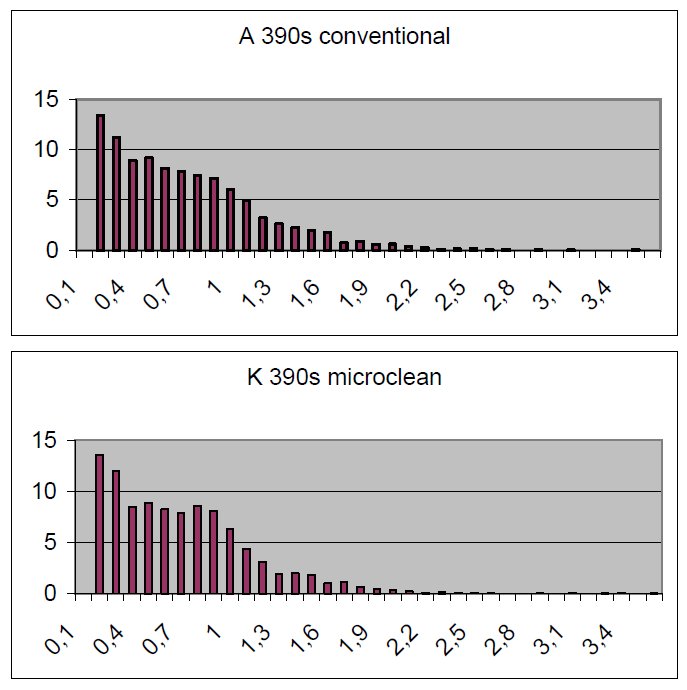
Figure 6: Size distribution for VC-carbides; x-axis: mean diameter in µm; y-axis: frequency in percentage.
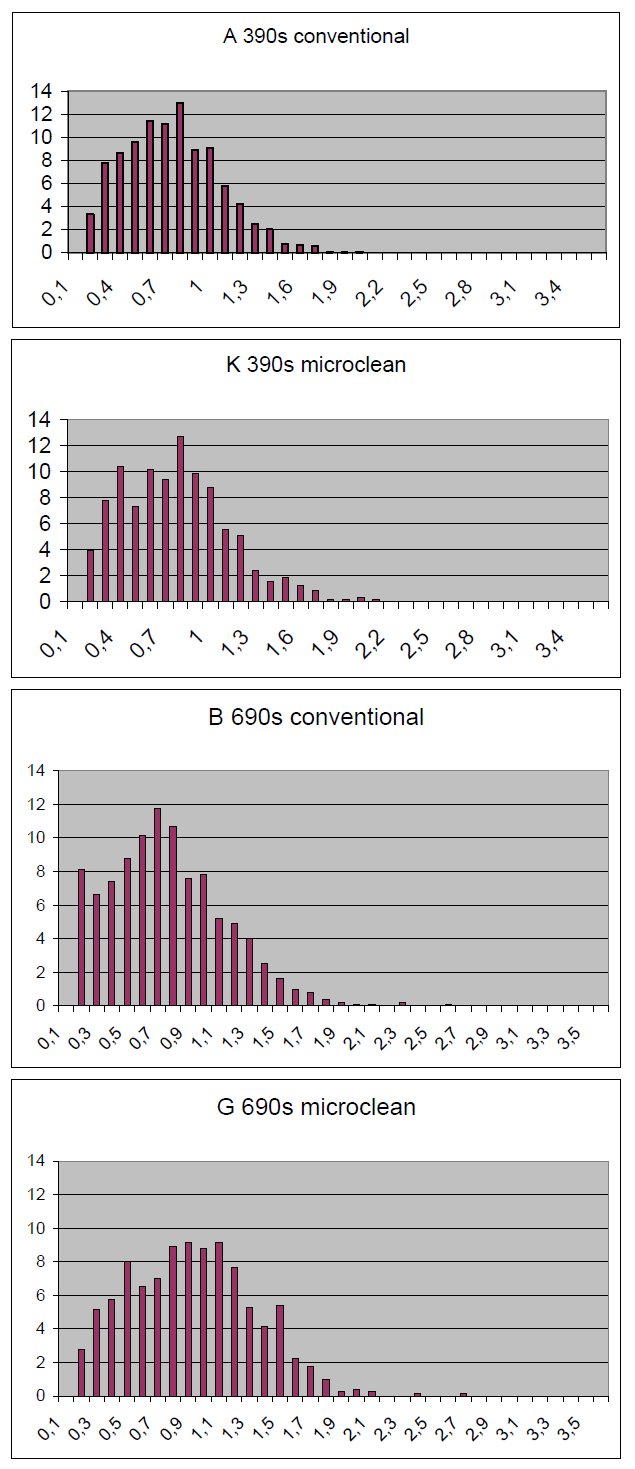
Figure 7: Size distribution for (Mo,W)6C-carbides; x-axis: mean diameter in µm; y-axis frequency in percentage.

Figure 8: Area fraction of VC-carbides based on EDS-maps.
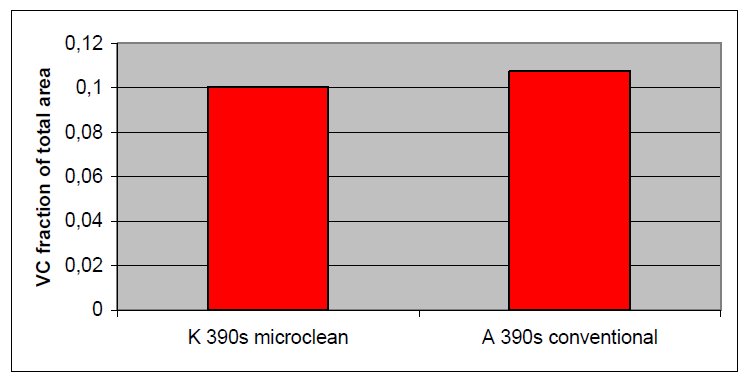
Figure 9: Area fraction of VC-carbides based on BSE images.
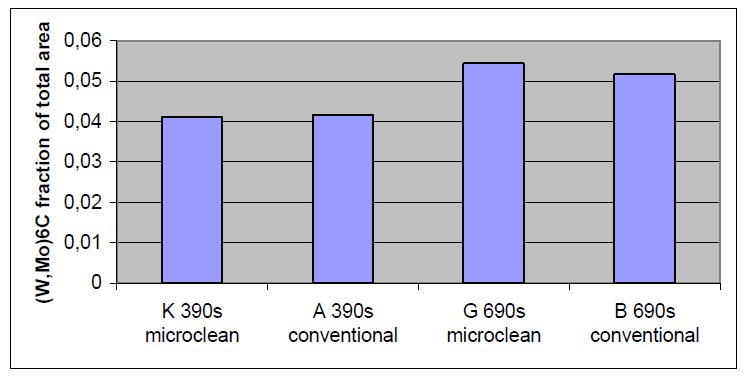
Figure 10: Area fraction of (W,Mo)6-carbides based on BSE images.
Carbide name: M6C, V8C7
Record No.: 734
Carbide formula: M6C (M=Fe, W, Mo), V8C7
Carbide type: M6C, M8C7
Carbide composition in weight %: No data
Image type: SEM, X-ray
Steel name: S 390 PM, S 690 PM
Mat.No. (Wr.Nr.) designation: No data
DIN designation: No data
AISI/SAE/ASTM designation: No data
Other designation: No data
Steel group: PM high speed tool steels
Steel composition in weight %: See the table 1.
Heat treatment/condition: The steels investigated were two PM High speed tool steels supplied by Böhler Edelstahl. The chemical composition of the steels are given in Table 2-1. Both steel types were supplied in a conventional (ISOMATRIX) and a MICROCLEAN grade. The specimens used were standard shouldered test specimens optimised to reduce stress concentra-tions in the transition area.
Note: The fracture surfaces of fatigued specimens were investigated using scanning electron microscopy (SEM) and energy dispersive x-ray spectroscopy (EDS). The aim was to quantify the distribution of cracked carbides and non-metallic inclusions on the fracture surfaces as well as on polished cross sections. The specimens were made of Böhler P/M steel grade 390s and 690s in both micro-clean and conventional grades.
The results show that the content of non-metallic inclusions are higher in the conventional grades than in the microclean grades, but there were found to be no link between non-metallic inclusions and the crack initiation. Surprisingly, no differences were found between the carbide size distributions of the micro-clean and conventional grades. Also, the distribution of the fractured carbides was found to be the same regardless of steel type, manufacturing method or location on the specimen.
For the investigations in SEM the fracture surface was divided into 3 areas: crack initiation, initial fracture and final fracture (see Figure 1). The crack initiation was investigated with SEM concerning abnormalities, e.g. carbide clusters or non-metallic inclusions. Afterwards the fracture surfaces were treated with 15g Alconox in 350 mL water preheated to 60°C. The solution containing the fracture surface was then placed in an ultra sonic cleaner for about 30 minutes and afterwards cleansed with water and acetone. This procedure is described in more details in literature. The treated fracture surfaces were then examined in SEM. 5 images were recorded at 5000x magnification in each of the three areas i.e. a total of 150 images. The number of fractured carbides was counted manually on the recorded images. A typical image of the fracture sur-face is shown in Figure 2.
On each of the polished cross sections A, B, G and K, 5 images were recorded at 2000x magnification and an acceleration Voltage of 15kV. These images were later used at quantitative image analysis (QIA).
The EDS-mapping was performed in the LVSEM and the maps were produced using the program ImagePlus, which is part of the Quest software package delivered by Thermo NORAN. Two types of carbides have previously been identified in the investigated steels: a M6C type (M=Fe, W, Mo) and a V8C7 type. For the EDS-maps of the polished cross sections the regions of interest setup were therefore, with focus on the elements W, Mo and V. When mapping inclusions additional elements C, O, Al, and Mn were included.
The procedure of dividing the carbides was abandoned when performing QIA on BSE images. The reasons for doing so were that it involved a great deal of subjectivity. It was difficult to tell even with the original image besides where to divide (see Figure 3). The program then counted carbide clusters as one big carbide, this was chosen because carbide clusters affect the material as if it was one big carbide.
Vanadium carbide size histograms based on BSE images: The carbide distributions shown in Figure 4 are obtained from EDS-maps (see Appendix A). On the EDS-maps the vanadium carbides are colour coded and can easily be distinguished from the matrix, which is a more difficult task on the BSE images. However, one has to consider the sampling volume that is connected with EDS-mapping. This sampling volume is larger than for backscattered electrons and therefore the BSE images are expected to provide the response closest to a two-dimensional image of the cross-section, while response from deeper lying carbides give rise to increased error in the X-ray maps. Furthermore, the M6C carbides are easier distinguishable from the matrix on the BSE images. Figure 5 shows W- and Mo-maps together with the corresponding BSE image. The resolution of the BSE image is clearly superior and a large number of “extra” small carbides present on the W- and Mo-maps are not seen on the BSE image. These are the results of noise and response from deeper lying carbides due to the larger sampling volume of the X-rays. As a consequence of these findings, QIA was performed on BSE-images instead of EDS-maps. Unfortunately it was not possible to extract the VC-carbides from the type 690s steel, because the carbides and the matrix have the same BSE contrast in this steel.
Vanadium carbide size histograms based on BSE images: Each of the histograms (Figure 6) is based on counts from 5 images and car-bides less than 0.1 µm was not taken in consideration. The QIA procedures were created with primary focus on reproducibility and especially regarding the size distribution of the VC-carbides errors occur. The ring shaped structures seen on Figure 3 originates because the same grey tones as the VC-carbides are also found around some of the molybdenum/tungsten-carbides. There was not enough contrast difference between the underlying matrix and the VC-carbides to avoid this problem. Therefore a comparison of the results based on X-ray maps and BSE images is not possible. Figure 6 reveals no differences between the microclean and the conventional steel types.
Tungsten/ Molybdenum carbide size histograms based on BSE images: Each of the histograms (Figure 7) is based on counts from 5 images and car-bides less than 0.1 µm was not taken in consideration. The microclean and con-ventional type 390s steel (Mo,W)6C-carbide distributions shown in Figure 7 are very similar. From the type 690s size distributions it appear to be the conventional type that has the smallest carbides.
The per-area distributions for the two manufacturing types microclean and con-ventional are approximately the same, but there appear to be a larger per-area fraction of M6C carbides in the grade 690s steel.
When comparing the carbide size distributions of the grade 390s conventional and the microclean tool steel no differences are observed. In the grade 690s the microclean contain fewer small (0.1-0.6 µm) carbides than by the conventional. Mutually the 390s and 690s contain the same area fraction of carbides regard-less of manufacturing method.
Links: No. 734, No. 735 and No. 736
Reference: Not shown in this demo version.